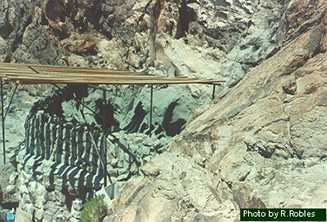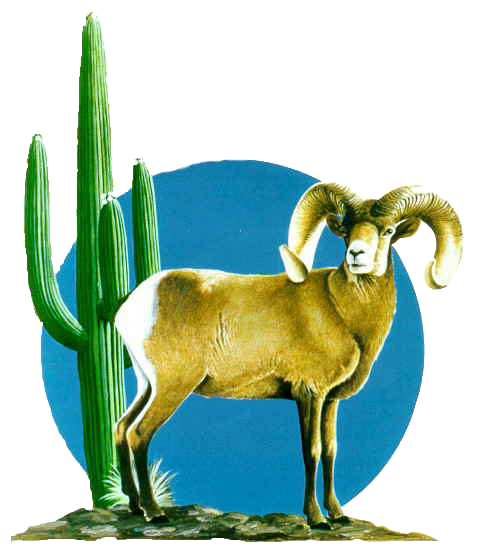Goals & Activities

The mission of the Arizona Desert Bighorn Sheep Society is "to promote the management of bighorn sheep and increase their population in the state of Arizona."
Goals
In order to accomplish its mission, the ADBSS has established the following eight goals:
- Develop water resources for bighorn sheep.
- Reintroduce bighorn sheep into suitable historic ranges.
- Prevent human encroachment onto bighorn sheep habitat.
- Assist government agencies with bighorn sheep population surveys.
- Support the reduction of feral burro populations in bighorn sheep habitat.
- Educate the public about bighorn sheep and their survival needs.
- Promote research needed for better management of bighorn sheep.
- Support efforts to reduce competition with domestic livestock and predators where necessary.
The first two goals, waterhole development and bighorn sheep transplants have been the focus of our organization.
Activities
Waterhole Development
For a variety of reasons, Arizona currently has large tracts of otherwise ideal habitat that is unable to support bighorn sheep due to a lack of water. Because of this, waterhole development has been an area of special emphasis for the Society. As of 1993, the Society has constructed nearly 150 waterhole development projects in cooperation with the Arizona Game and Fish Department, the Bureau of Land Management, and the U.S. Fish and Wildlife Service. The Society has provided the funds for a large number of these projects, and volunteers from the Society have provided the bulk of the physical labor.
The typical waterhole development project takes place in extremely remote country, necessitating the use of a helicopter to shuttle in supplies, equipment, and sometimes the volunteer workers. Even with the hundreds of hours of labor donated by the Society’s volunteers, the total cost of the average project runs about $35,000.


Bighorn Sheep Transplants
Prior to the arrival of white settlers in Arizona, bighorn sheep could freely roam between the mountain ranges that supported them. Indications are that they did so on a frequent basis in response to drought conditions, over crowding, predation, other factors. Now, however, the deserts that separate these mountain ranges have roads, canals, agricultural fields, and other cultural features that prevent that migration. As a result, bighorn sheep are unable, in most cases, to naturally repopulate mountain ranges from which they have become extirpated.
For this reason, the Society has aggressively supported the Arizona Game and Fish Department, the Bureau of Land Management, and the U.S. Fish and Wildlife Service in their bighorn sheep transplant programs. To date, 1066 sheep have been successfully transplanted. The transplants have established viable populations in ten mountain ranges that had no bighorn prior to these transplants. In addition, they have supplemented remnant bighorn populations in many other locations, restoring vitality to those herds and allowing them to expand both their ranges and numbers. Some desert bighorn sheep have been relocated to Colorado, New Mexico, Utah, and Texas in exchange for Rocky Mountain bighorns and pronghorn antelope.
Like waterhole projects, sheep transplants are expensive. The average transplant of twenty sheep will cost $20,000. Visit our Transplants page to read about some of transplants in which we’ve participated.

